How to Keep Your Bedroom Cool in the Summer
Bedding and Accessories Make All the Difference
This article is part of our series, Sleep Week: The Ultimate Guide to Getting Your Best Sleep Ever. Sleep Week is your destination for whole sleep happiness, curating our very best tips and product recommendations to help you create your coziest, most comfortable sleep environment yet.
Summer is filled with memory-making pastimes like family vacations, outdoor activities, ice cream cones, and days spent frolicking at the beach. But the clear, sunny skies can lead to steamy hot nights when the sun goes down, making it hard to sleep. Sure, you can turn the thermostat way down (if you have central air), but you’ll pay for it on your utility bill. Or, you can tweak your bedroom's furnishings to a summertime ensemble that will keep you cool and offer a better night's rest.
Use Lightweight Blankets
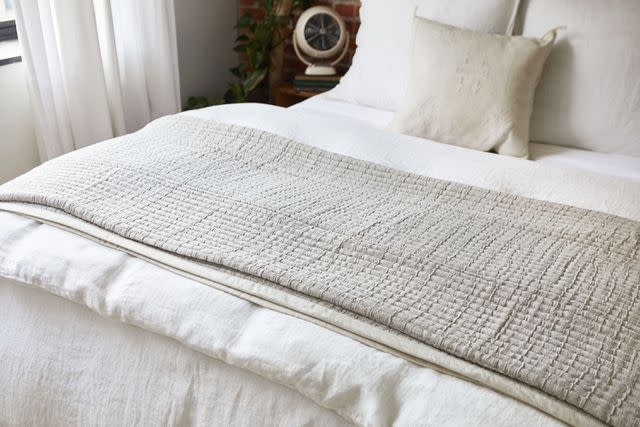
The Spruce / Adelyn Duchala
When winter temperatures dip, few things are as pleasant as curling up in bed under a lofty comforter. But when summer temperatures swelter, heavy bedding is the last thing you need. Instead, make a seasonal switch to a light, open-weave, 100 percent cotton blanket. Both the material and the weave make this bedside covering far more breathable than a microfiber or tightly woven blanket. The weight lends just enough to feel securely covered and still remain comfortable, even in the warmest climates. Choose a light colored blanket or one with a delicate pattern to make the room cooling to the eye, as well.
Switch to Light Cotton or Linen Sheets
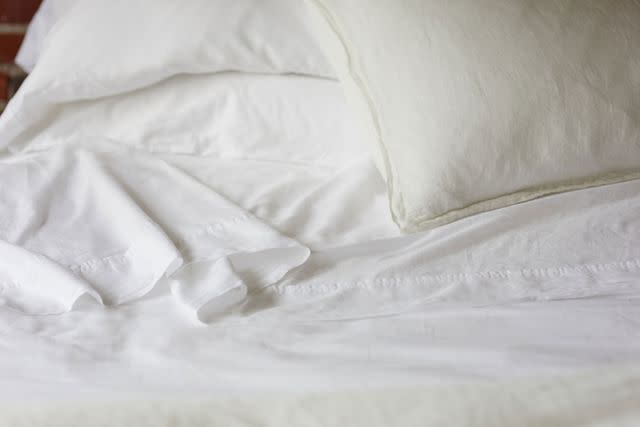
The Spruce / Adelyn Duchala
Flannel sheets can be packed neatly away at the first sign of spring. Then, when the mercury starts to soar, synthetic bedding should follow suit. That's the time to treat yourself to some lightweight 100 percent cotton sheets. Contrary to popular belief, the thread count doesn't have to be high for a comfortable night's rest. In fact, high thread counts can sometimes be too insulating for the summer (a 400 thread count works best). Look for sheets made from extra-long staple cotton—like Egyptian or Pima—for the coolest and softest option. Select sheets that are white or come in a pale pastel for a blast of psychological cooling, to boot.
Cool Down Your Pillow
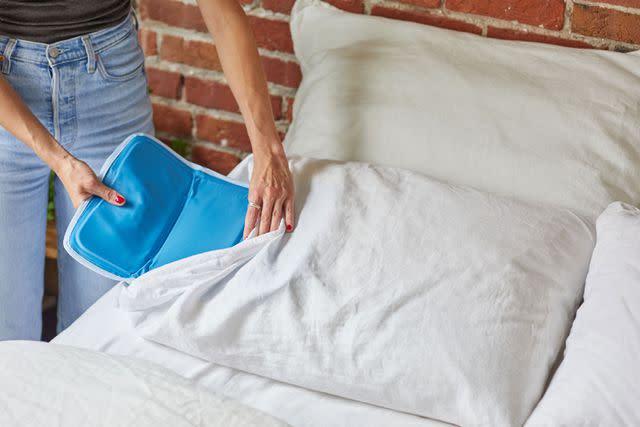
The Spruce / Adelyn Duchala
A hot, sweaty pillow makes you flip from side to side all night long in search of some relief. Instead, try putting a gel-filled cooling mat over the top of your pillow for an always-comfortable spot to lay your head. The thin mat is filled with the squishy gel found in reusable ice packs and is sized to fit on top of a standard pillow. Because the pad is moldable, you’ll hardly notice it's there. For an extra cool head, place the mat in the fridge or freezer just before bedtime. But even a pad left at room temperature will lend relief, as the inner gel feels much cooler than the surrounding air, wicking heat away from your body.
Invest in a Bedside Fan
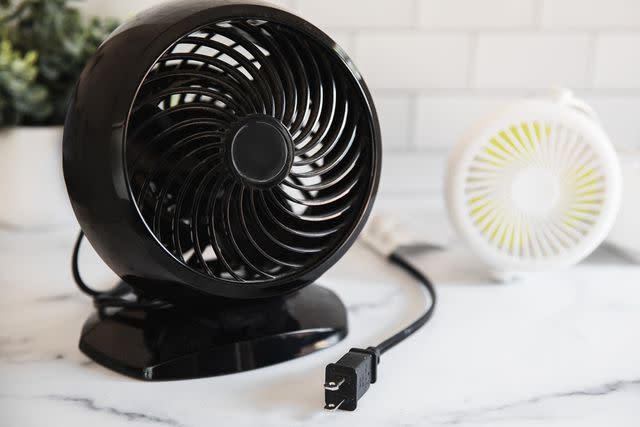
The Spruce / Ana Cadena
If you crave a cool summer breeze but don't want the expenditure of running the air conditioning, try a small bedside fan or a ceiling fan instead. Perched on your nightstand or dresser, a portable fan directs the breeze right where you need it. Try setting a bowl of ice cubes and chilled water in front of the fan to keep the constant flow of air from drying out your nose and throat. To cool down the whole room before bed, flip on the ceiling fan to dissipate the warm air that collects up high.
Must-Haves for the Perfect Warm-Weather Nap Outside or Indoors
Humidify the Air
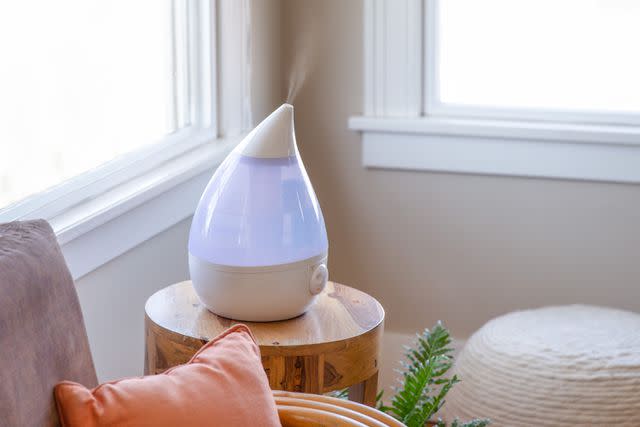
The Spruce / Krystal Slagle
Summertime brings dry, arid air to certain climates like the Southwest. This air sucks the moisture from your skin, eyes, and throat. Even in a humid climate, central air conditioning can greatly reduce indoor humidity, leaving you parched. Enlist the help of a humidifier to provide just enough moisture to keep you cool and comfortable. Run it near your bedside and change the water each day to prevent the buildup of molds.
Opt for a Lightweight Duvet
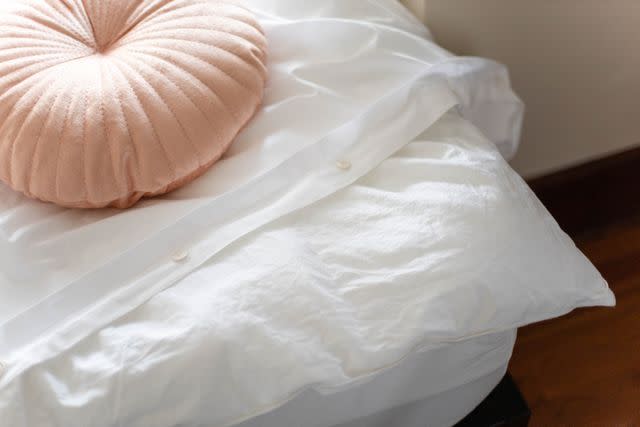
The Spruce / Erica Lang
When temperatures rise, sleeping under down seems counterintuitive. However, a lightweight, low-fill down duvet can actually keep you cool. The "fill" equates to the measurement of feathers contained inside the duvet. Four hundred to 600-fill duvets work best year-round in climates with four seasons. But if you run warm or live in a subtropical climate, a duvet with a fill power under 400 is more suitable. Lightweight duvets tend to contain more feathers than down—feathers are less insulating and very breathable—making them an excellent choice of fill for the muggy months. Finish your summer bedding with a duvet cover in a soft color or a simple pattern for an overall airy vibe.
Turn a Hot Water Bottle Into a Cold One
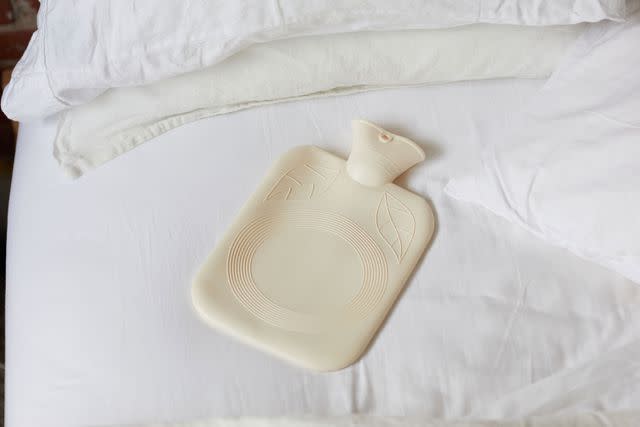
The Spruce / Adelyn Duchala
Typically, a hot water bottle is used to heat the body. But that doesn’t mean it can’t be filled with something cool instead! Simply, store your water-filled rubber bottle in the fridge during the day, and then slip it under your sheets at bedtime. Use it to cool your feet, tuck it behind your knees, or prop it under your neck and your entire body will feel cooler. This is a great way for menopausal women to ward off dreaded hot flashes, as well.
Close the Blinds or Curtains
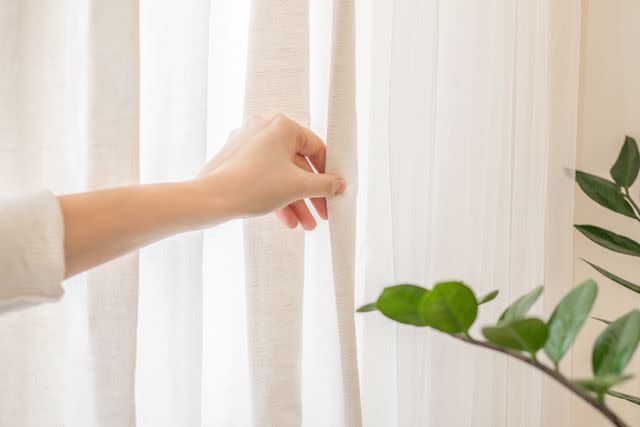
The Spruce / Sanja Kostic
Those window treatments do more than just look pretty in the window. They are there to close during the night when you're ready to go to sleep, and to help keep the heat of the day out of the room. If that morning or afternoon sun pours into the windows, simply close those blinds or other window treatments as it will help tremendously to keep the room cool.
Keep in mind that sheer curtains will not help. Invest in blinds or curtains that are light in color or black-out curtains to help keep the heat out. You can always open them after the sun moves in another direction.
Use Energy Efficient Bulbs
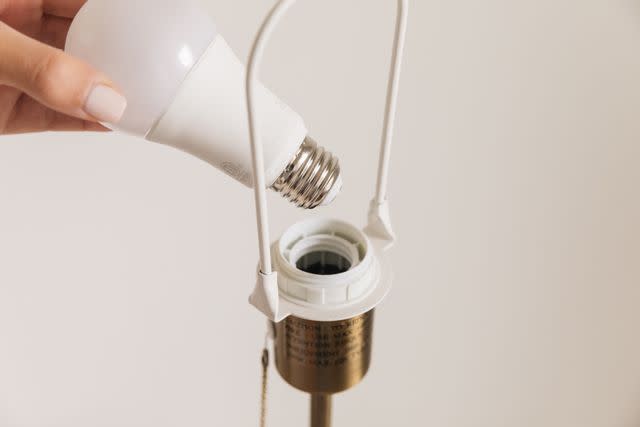
The Spruce / Letícia Almeida
Change out those old-time light bulbs for the newer, more efficient ones. While LED bulbs do generate heat, it is less than what regular bulbs do. Remember to switch all lights off when you're not in the room, too. Every little bit will help, plus the energy-efficient bulbs also save on your electricity bill.
Fix Cracks Around Windows
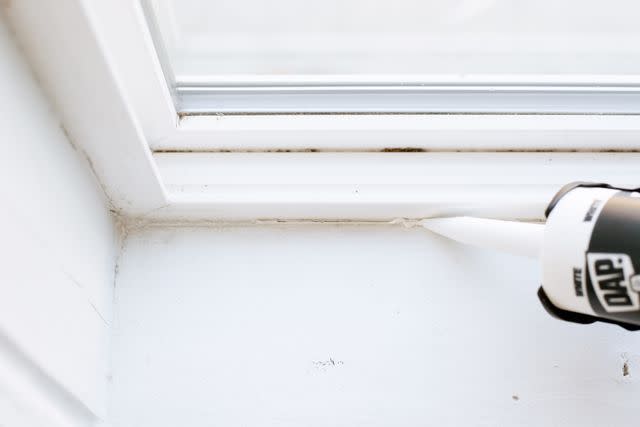
The Spruce / Michele Lee
If your windows are not sealed properly, the cold air can sneak out through those cracks. Caulk and window stripping gets old and needs to be fixed or replaced. Making sure those windows are sealed tight is a good step toward keeping the room cooler. Check the windows inside and outside, looking for any cracks in the caulking, as that's a sure sign you will need to recaulk. It will not only keep the cold air inside the house, but sealing your windows will keep the bugs outside where they belong.
Add Reflective Film
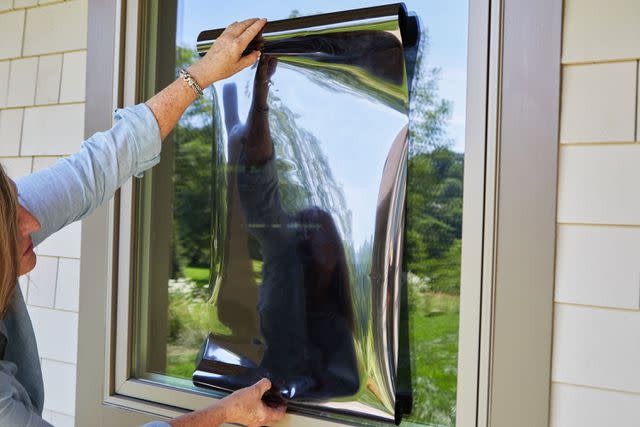
The Spruce / Adelyn Duchala
Besides caulking or replacing the weather stripping, putting a reflective film on the outside of your bedroom windows will also keep the heat out of the room. Light still comes in, but some of the UV rays are blocked. Adding reflective film helps keep the room cooler in the summer, and it will retain the heat inside of the home during the winter months, too. It's a win-win situation.
Keep Bedroom Doors Open
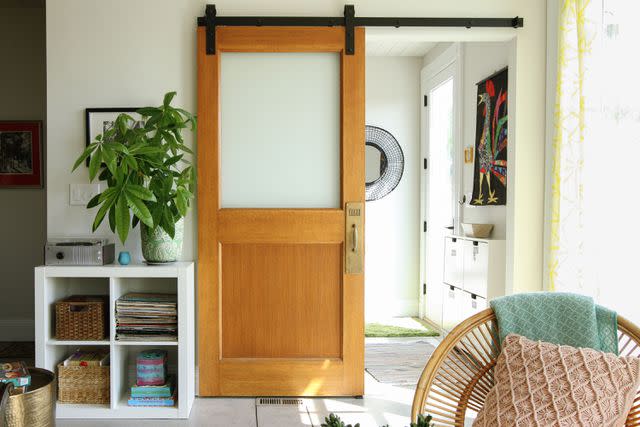
The Spruce / Ashley Poskin
Keeping the doors open to bedrooms or other rooms that you use will help optimize the airflow in your home. Think of it this way, the air conditioner kicks on, thus moving air around the entire house; if a door is closed, then it blocks the air from moving freely throughout all the rooms. A ceiling fan or bedside fan that is running, also helps to increase the circulation of air.
Add Some Shade Outside

The Spruce / Michelle Becker
Planting trees and bushes in front of the windows or installing awnings on them will provide shade keeping the sun and heat out of the bedroom. This, in addition to the closing of the blinds or curtains, will keep the room cooler.
Make sure to strategically place any trees so they don't block your view outside or cause issues with roots. Trees can provide shade for many years to come, plus you can enjoy being cooler sitting under them while you're outside, too.
Change the A/C Filter
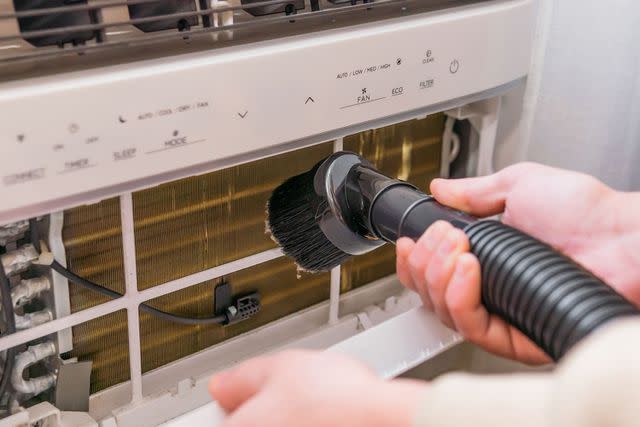
The Spruce / Nanor Zinzalian
If your air filter is clogged up with dirt, allergen, pet dander, and other particles, the air conditioner cannot work properly and will run more. A reusable air filter needs to be kept washed and disposable air filters need to replaced. This should take place every 90 days at the least, so put a reminder on your electronic device or mark your calendars accordingly. Your air conditioner will run more efficiently, keeping the home cooler, and cost less in electric bills. It will thank you, as it won't be running constantly trying to "breathe" through the mess to achieve the proper temperature.

